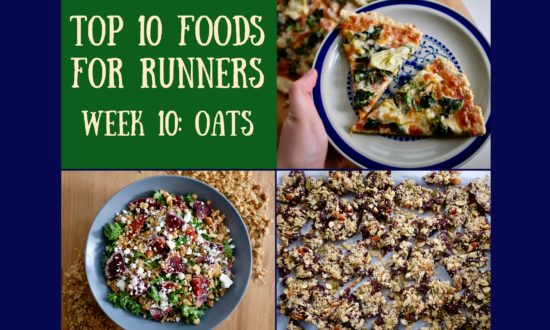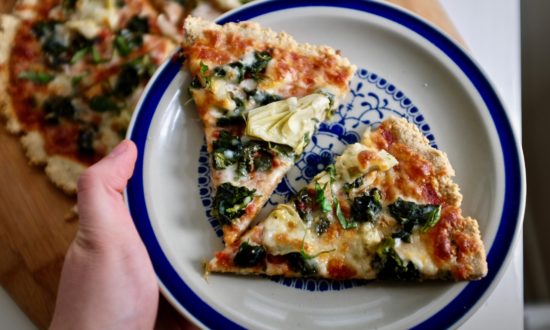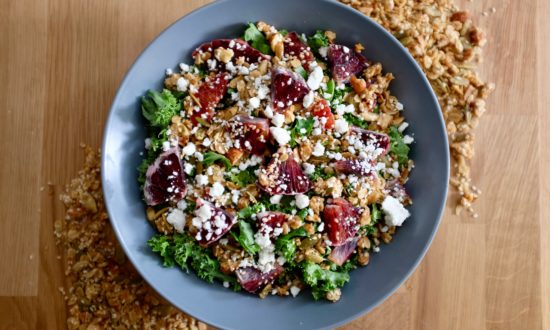Okay so it’s not technically week 8… I kind of dropped the ball for a bit. It’s not a good sign when you feel exhausted by just the thought of sitting down to write. I felt like that for a month or two, knowing I just needed to let it pass. There’s no use putting in half-hearted work because how could I expect the results to be any different? But I’m back, motivated and ready to finish these Top 10 Foods for Runners!
So let’s talk yogurt!
Yogurt is a pretty weird food if you think about it even a little bit. But what it lacks in normality it makes up in nutrients! Unless you’ve been living under a rock (no offense to any rock-dwellers out there), you should be aware that everyone’s crazy for yogurt these days. Especially the fitness community. I guarantee if you follow any health nuts on Instagram, at least five of them will post a photo today of a stunningly elaborate bowl of yogurt filled with 18 different super foods they just happened to “throw together” for breakfast.
Although sometimes outlandish, the yogurt craze comes with benefits to one’s diet that are hard to ignore. High in protein, calcium, and probiotics, yogurt is a powerful and versatile food. But beware, friends. Despite the cheerful and promising packaging, not all yogurt is created equal.
To make our lives as consumers even more difficult to navigate, standard grocery stores now have yogurt aisles about a mile long packed with every variety imaginable. It’s madness and it can be entirely overwhelming. If you’re one to rush blindly into the yogurt aisle and frantically snatch the same yogurt you’ve been relying on for years, I totally understand you.
The yogurt aisle can often feel like a war-zone filled with people willing to sacrifice their dignity for yogurt-brand loyalty and dazed stragglers staring blankly at the brightly-lit wall of options. Sometimes it’s best to duck in for the old reliable and make a run for it. Before you brave to yogurt aisle again, check out this quick guide to the yogurt options. It might change the way you buy yogurt, it might not, but in these situations, it’s always best to be prepared.
Types of yogurt
Plain vs Flavored: Pretty straightforward. Plain yogurt is just yogurt. Nothing else added. It tastes a good deal like sour cream. The flavored yogurts have had something added to them like flavoring and sweetener. Growing up, I definitely thought plain yogurt was the same as vanilla yogurt. Turns out that’s not the case. Be careful with flavored yogurt. They are often packed with a scary amount of added sugar and coloring. A general rule is your yogurt has more grams of protein than grams of sugar. It’s a good idea to buy yourself some plain yogurt and add the sweetener yourself. That way you control exactly what is added and how much of it.
Full Fat vs 2% vs 0%: The fat percentages are the same as with milk. Full fat yogurt is made with whole milk, 0% is made with skim milk. Obviously, the smaller the percentage, the less fat content your yogurt will have. But don’t rule out the full-fat or even the 2% stuff just yet. Fat is a satiating nutrient, meaning it fills you up and leaves you feeling full longer by slowing down the release of sugar in your bloodstream. This helps prevent overeating. Also, full-fat dairy is lower in lactose, making it easier for those with a lactose intolerance to digest.
Greek: Greek yogurt much thicker than normal yogurt. It is commonly used as a healthier substitute for sour cream because the textures (and tastes) are so similar. It can also withstand heat better than normal yogurt, making it great to cook with. Greek yogurt is made by straining regular yogurt to remove the liquid whey. Since it’s pretty much concentrated yogurt, the Greek stuff has a higher protein content, but a lower calcium content.
Icelandic: Also called “skyr,” Icelandic yogurt is similar to Greek yogurt. It requires four times the amount to make Icelandic yogurt compared to regular yogurt, making it super concentrated and giving it two to three times the amount of protein.
Australian: Australian yoghurt isn’t strained like the Greek or Icelandic varieties, but it is also typically made with whole milk. That makes it richer than regular yogurt, but not as thick as the Greek or Icelandic. It is typically sweetened with honey and offers a high amount of protein.
Non-Dairy: If you can’t handle the lactose or you steer clear of animal products, not all hope is lost. There are a few non-dairy options stocked on the shelves. Soy yogurt, almond yogurt, and coconut yogurt are all options. Soy yogurt is fairly thin and it can be difficult to find options without added sweeteners. However, there are good organic options that make the choice a little easier. Almond yogurt is high in fiber and calcium and low in fat and calories. Same texture and issues as soy yogurt, and the protein count is a bit low because so much was extracted during the yogurt-making process. Coconut yogurt is great for those who like the taste of coconut. The texture is thin like regular yogurt and it can be hard to find varieties without added sugars. Plus, it doesn’t boast an impressive amount of protein.
Goat’s Milk: Great for people allergic to cow’s milk (apparently a lot of infants can’t handle the stuff). It also has a smoother, richer, and creamier texture than cow milk yogurt. Although if you are not a fan of goat cheese, you probably won’t love their milk either. The fat content is a little higher, but like I said above, that’s not a bad thing.
Sheep’s Milk: Perfect for those who can’t stand goats and cows. Sheep’s milk yogurt is fairly similar to the taste and texture of cow’s milk yogurt. The fat content is higher as in goat’s milk, and it is an excellent source of B vitamins, calcium, and riboflavin. This yogurt is ideal for cooking because it doesn’t break down like other yogurts at high temperatures.
Kefir: Kefir is yogurt you drink! But no, it is NOT the same a Go-Gurt (do they still make those??). It’s filled with probiotics because it’s made by adding kefir grains to milk and letting the mixture stand for awhile. The process magically creates a plethora of probiotic goodness.
Benefits of yogurt
Why do we eat the stuff, you ask? Well, let me offer some enlightenment.
Calcium: I mean, it’s dairy. So this one is kind of obvious if you’ve ever seen a milk ad. But calcium is no joke! plays an important role in muscle contraction, transmitting messages through the nerves, and the release of hormones. Eat your yogurt and strengthen those bones! No one wants brittle bones. They’re just not in style.
Protein: Yogurt is a legit source of protein! Regular yogurt has a decent amount per serving, around 5 grams. The thicker yogurts like Greek and Icelandic varieties have around 17 grams of protein per serving. That’s insane!
Probiotics: Probiotics are bacteria who want to be your friend and crash in your digestive system. They’re actually really good guys to have around. These guys benefit digestive health, reduce inflammation, and may strengthen your immune system. Not all yogurt contains probiotics due to the pasteurization process. So try and get the ones that do boast about their “live and active cultures”
Other nutrients: Vitamin B-2! Vitamin B-12! Potassium! Magnesium! All things to help your heart and that brain of yours.
Recipes
Sure, you can just eat yogurt, or you can eat yogurt and a bunch of other stuff! There are a million ways to use it, here are just a few. I used plain 0% Greek yogurt in the recipes below, but feel free to branch out!

Fig butter breakfast bowl
Ingredients
- 1/2 cup plain Greek yogurt
- 2 tbsp fig butter
- 1/2 tsp coconut oil
- 1 small banana, sliced
- 1/4 cup toasted almonds, chopped
- 1 slice favorite quick bread (banana, zuchinni, etc), toasted and chopped
Instructions
-
Heat oil in a small frying pan to a medium-low heat. Add banana slices and cook until both sides are golden (use a fork to flip slices). Set aside.
-
Swirl together yogurt and fig butter. Top with almonds, bread, and bananas.

Mediterranean yogurt dip
Ingredients
For dip
- 1 cup plain Greek yogurt
- 1/2 cucumber, seeds removed and diced
- 1 clove garlic, minced
- juice from 1/2 lemon
- 1 can chickpeas, drained and rinsed
- 2 green onions, diced
- 1 tbsp garlic powder
- 1/4 cup oil-packed sun-dried tomatoes, chopped (oil reserved)
- 1 red bell pepper, diced
- 1 cup baby spinach, chopped
- 1/2 cup crumbled feta
For pita chips
- 4 whole wheat pitas
- 2 tbsp olive oil
- 1 tsp dried oregano
- 1 tsp garlic powder
- sea salt
Instructions
For the dip
-
Mix together yogurt, cucumber, garlic, and lemon juice. Spread evenly on the bottom of a pie dish or 9x9 baking dish
-
Add oil from the sun-dried tomatoes to a pan and bring to medium heat. add chickpeas, green onion, and garlic powder, mashing the chickpeas as you stir. Cook for about 5 minutes and during the last minute, add the sun-dried tomatoes. Let cool.
-
Combine red pepper, spinach, and feta. Top yogurt mixture with chickpea mixture, then top with feta mixture. This dip can be made 24 hours in advance.
For the pita chips
-
Preheat oven to 375 degrees.
-
With a pastry brush, coat each side of the pitas evenly with olive oil. Cut each pita into eight triangles and transfer to baking sheet.
-
Sprinkle with oregano and garlic powder. Bake for about 10 minutes or until pita slices are golden around the edges. Remove from oven and sprinkle with salt.

Fajita bowl
Ingredients
- 1/2 cup plain Greek yogurt
- 2 limes
- 2 tbsp garlic powder, divided
- 1 cup cilantro, chopped and divided
- 3 tomatoes, seeds removed and diced
- 1/4 white onion, diced
- 1 clove garlic
- 4 chicken tenderloins, raw
- 1/2 tsp paprika
- 2 cups whole grain rice, cooked
- 1 yellow onion, sliced
- 1 red bell pepper, sliced
- 1 green bell pepper, sliced
- 1/2 can black beans, drained and rinsed
- 1 avocado, mashed
- 1 cup shredded lettuce
- 1/2 cup cheddar cheese
- salt and pepper, to taste
- oil, for cooking
Instructions
-
Combine yogurt, cilantro, several dashes of garlic powder, juice from 1/2 lime, and salt and pepper. Set aside.
-
Combine tomatoes, white onion, minced garlic, a handful of cilantro, and salt and pepper. Set aside.
-
Mix together juice from 1/2 of a lime, 1/4 tsp paprika, 1 tsp garlic powder, and salt and pepper. Heat a small amount of oil over medium heat and add chicken tenderloins. Brush lime mixture on chicken throughout cooking. Remove from heat once cooked through.
-
In the same pan, heat about a tbsp of oil over a low heat and add rice. Mix in the juice from 1/2 a lime, garlic powder, and a handful of cilantro. Season with salt and pepper. Divide between two bowls.
-
In the same pan, heat a small amount of oil over medium heat and cook bell peppers and yellow onion until soft and onions start to look translucent. Add to rice.
-
In the same pan, heat a small amount of oil over a medium heat and add beans, the juice of 1/2 lime, 1/4 tsp paprika, a generous dose of garlic powder, and salt and pepper. Cook for a few minutes, then divide between the two bowls.
-
Top bowls with chicken, tomato mixture, lettuce, cheese, yogurt, and mashed avocado. If you are short on time, cook/assemble ingredients ahead of time. and reheat chicken, beans, rice, and peppers before assembling.
Sources
- https://www.medicalnewstoday.com/articles/295714.php
- http://www.eatthis.com/yogurt/
- http://kidshealth.org/en/teens/calcium.html
- https://health.usnews.com/wellness/food/articles/2016-10-28/5-reasons-to-start-eating-full-fat-dairy-according-to-science
- https://www.healthline.com/nutrition/7-benefits-of-yogurt#section6







